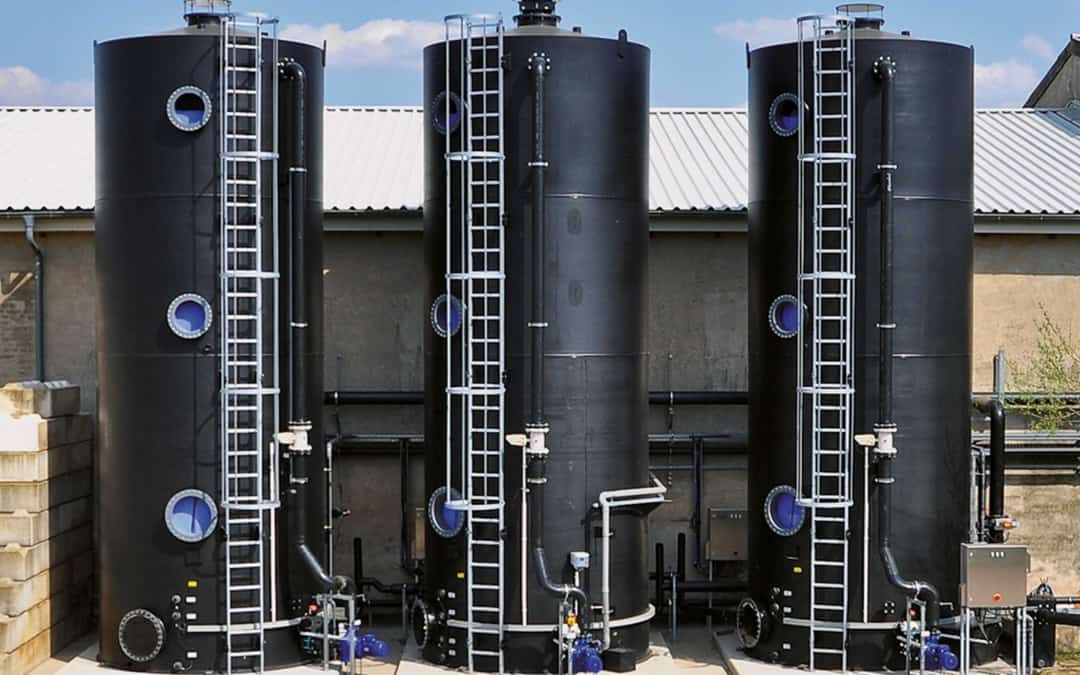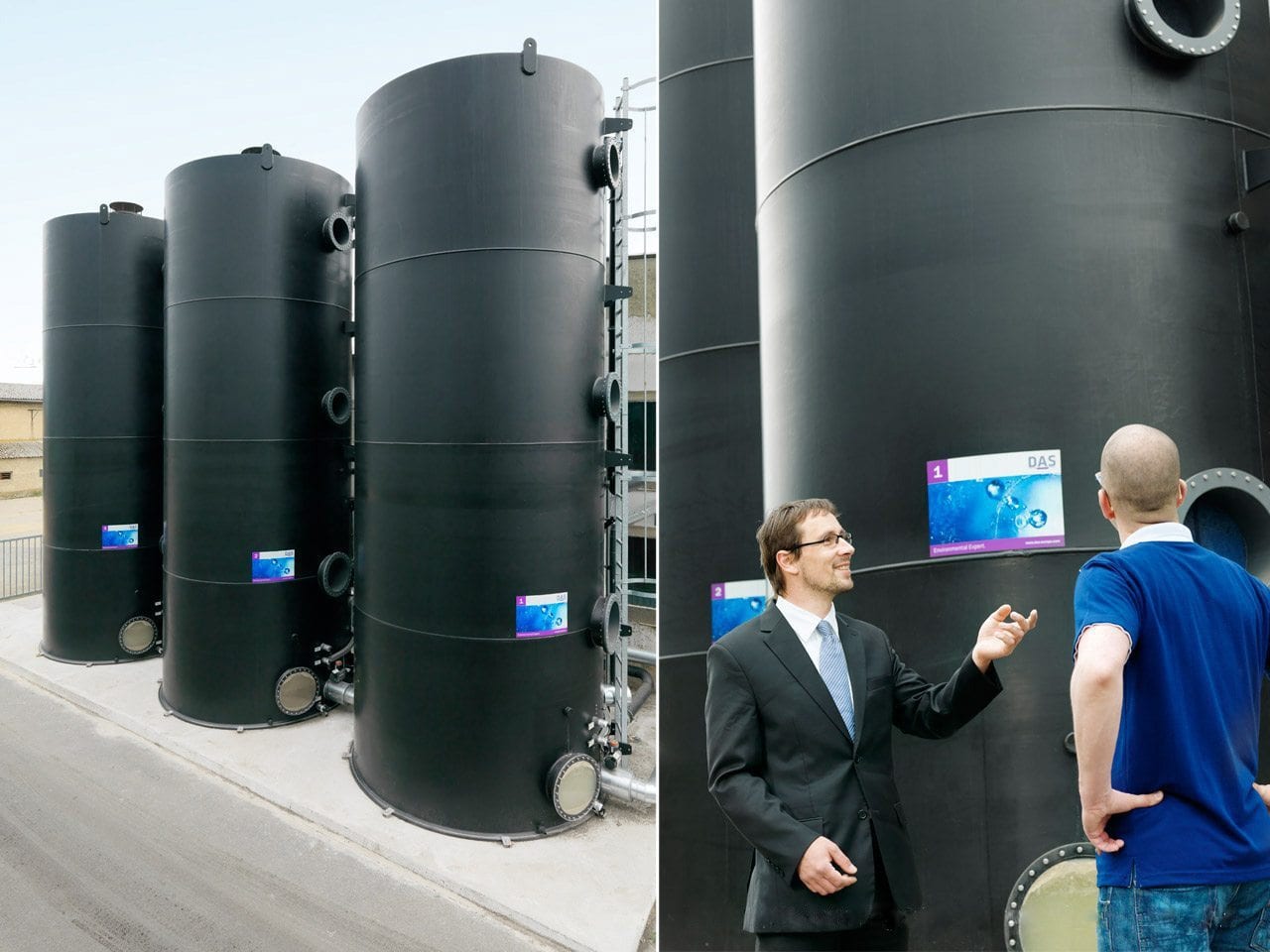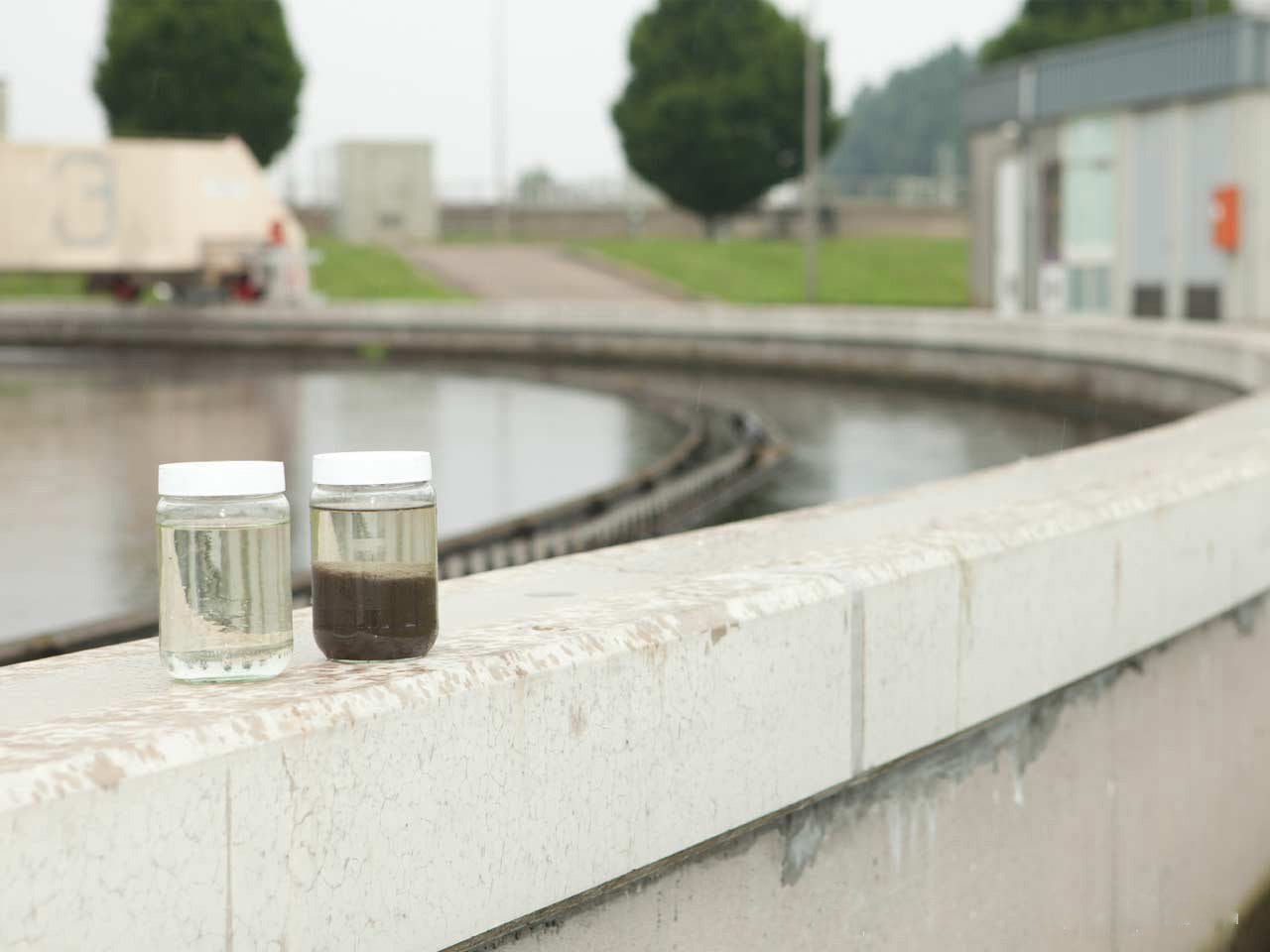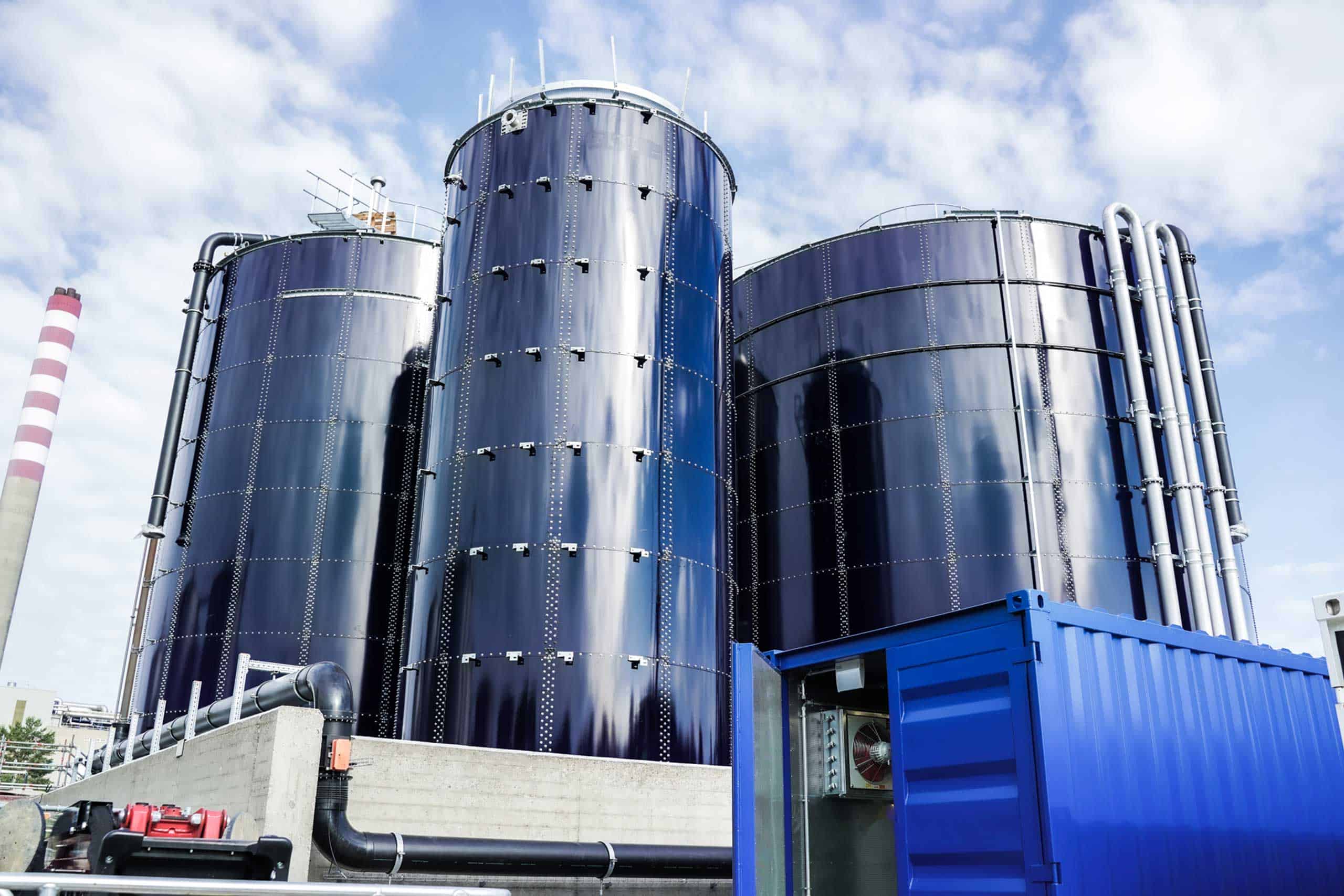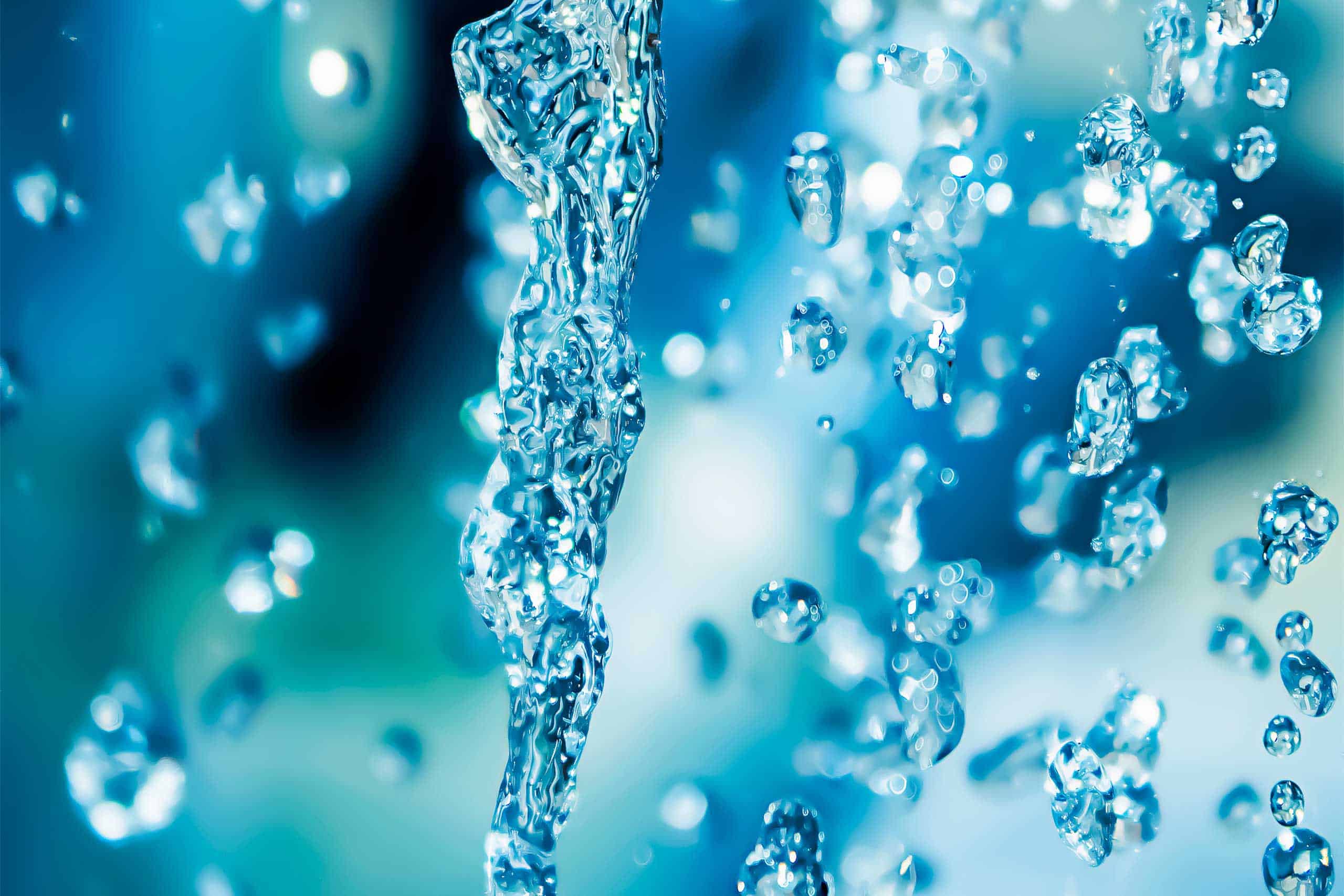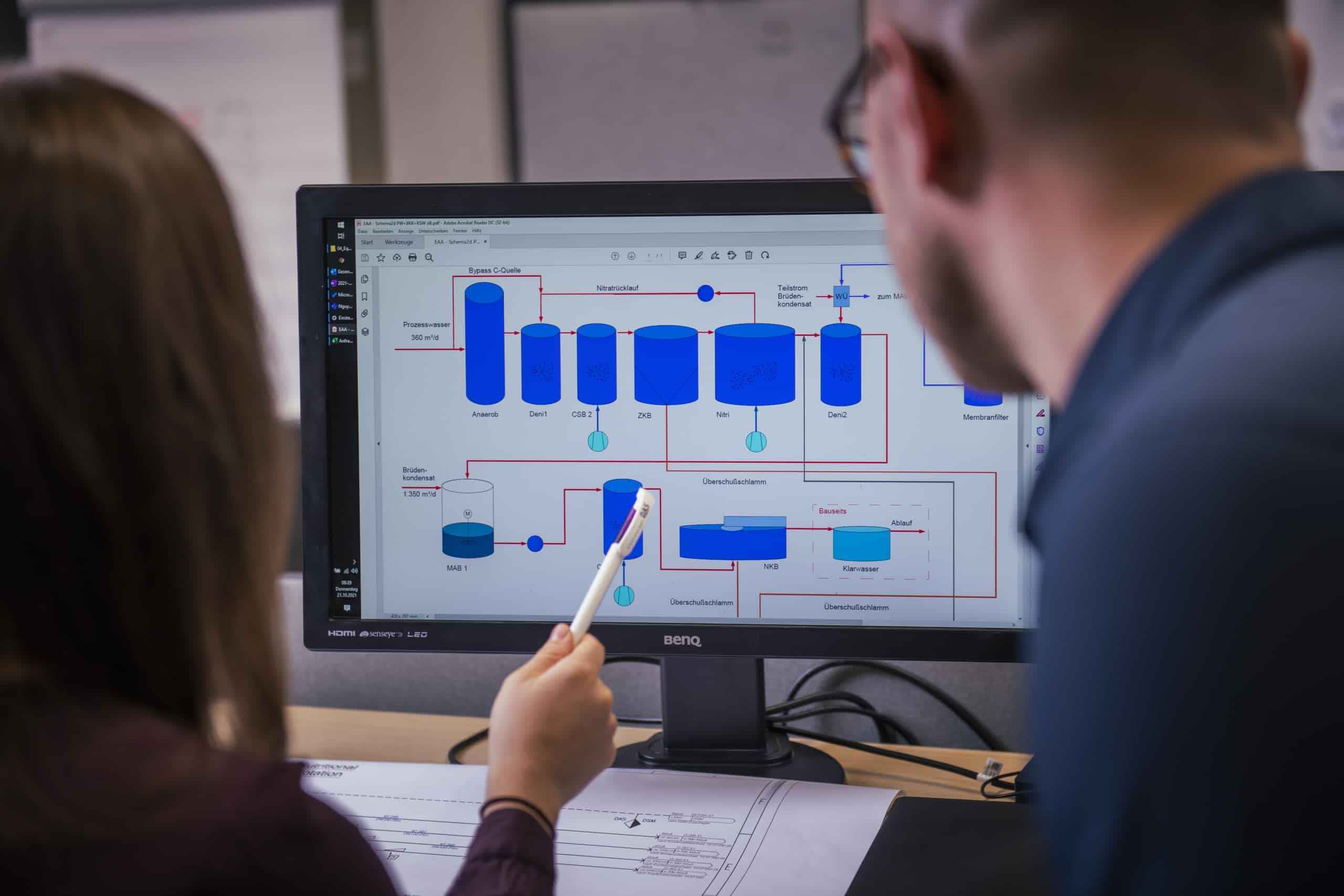Cost-efficient Treatment for Landfill of AMAND Umwelttechnik
The composition of landfill leachates differs depending on the type of waste stored, the weather and the holding time in the landfill body. Besides the safe leachate treatment, a strong reduction in odour was achieved for the Grumbach landfill.
Landfill leachate typically contains high concentrations of organic pollutants and, moreover, can be contaminated with water soluble nitrogen and sulfur compounds, chlorides, and heavy metals.
When rainwater seeps through the landfill the water absorbs soluble organic and inorganic (harmful) substances. Due to exothermic decomposition processes inside the landfill, the leachate’s temperature is usually higher than that of the surrounding groundwater. Untreated landfill leachate that reaches the natural water cycle poses a threat to the environment and therefore, it is collected and treated when necessary. Landfill leachate is usually brown in color, turbid, and has a distinctive odor.
Wastewater Analysis and Application of an Pilot Plant
The treatment of landfill leachate is complicated, since its composition changes over the lifetime of the landfill and the concentration of contaminants can fluctuate sharply depending on the amount of precipitation. The hazardous waste landfill managed by AMAND in Saxony’s Grumbach accrues organically-loaded leachate that, in addition, is highly contaminated with hydrogen sulfide and ammonium. Previously, contamination from hydrogen sulfide and ammonium caused an overload to communal treatment plants and created an overwhelming odor that emanated from the sewer system.
DAS Environmental Expert was contracted to develop and install a suitable method for the treatment of the Grumbach landfill leachate. With the client’s best interests in mind, the waste water experts concentrated on developing a cost-effective treatment method, and they concluded a biological treatment method would be most suitable.
In a first step, a degradation test was performed in the DAS laboratory using microorganisms; and the results were positive. The contaminants were degraded to the required degree. Subsequently, an on-site pilot plant was installed.
This helped to discover how to create accommodating conditions for the microorganisms, so they would optimally perform the degradation. Soon it became evident that the system would have to adapt to constantly changing conditions. During heavy rains, the system has to handle large volumes of lessened pollutant concentration. During dryness, however, the leachate becomes highly concentrated, and adapting the treatment method to both conditions became necessary.
Application of Bioreactors for Leachate Treatment
After having successfully tested the treatment method in the pilot plant, the system — in a third step ‑was scaled-up to its final size. At its core, the treatment method consists of three Trickle-Flow-Reactors (TFR) designed by DAS Environmental Expert that contain a carrier material populated by microorganisms that perform the degradation of contaminants. Two aerobic TFR-Reactors make it possible to reduce the organic load and to convert ammonium to nitrate. Subsequently, in an anoxic TFR-Reactor and by adding external carbon, the nitrate is transformed into inert gaseous nitrogen. Periodically, biomass sludge is removed from the reactor. Measurement equipment is checked regularly and preventative maintenance is performed yearly.
The system at the Grumbach landfill has been running since August 2013. The system reduces ammonium nitrogen and sulfide concentrations of the inflow to values in compliance with strict effluent standards.
During trouble-free operation, the treated water is free of odor and can safely be discharged into the communal waste water system for further treatment.
“Looking back, contracting DAS Environmental Expert was the right decision”, Mirko Müller, project manager at Amand Umwelttechnik Grumbach, says. “The team is characterized by high expertise and a strong commitment. From initial installment, to technical supervision during the commissioning and optimization phase, and all the way to service and maintenance, the team lends support to us as the operators of daily procedures. The system’s concept is innovative, coherent and well-thought out. The guaranteed inflow and outflow limit values are safely reached and remain within the guidelines”.
